Home » Articles posted by swico_admin
Author Archives: swico_admin
SoHe 2025 announcement

We are glad to announce that the 5th workshop of the Solar and Heliospheric Italian Community (SoHe5) will be held from the 10th to the 12th September, 2025, at the Department of Physics of the University of Calabria, Arcavacata di Rende (CS).
The meeting will focus on the following scientific topics:
- Solar atmosphere: discussion on processes of magnetic field emergence, solar convection, MHD waves, chromospheric and coronal heating;
- Solar interior and solar activity cycle: internal structure of the Sun, magnetic dynamo processes and solar activity;
- Solar flares and magnetic reconnection: observations and modeling of flares, magnetic field reconnection;
- Solar wind: origin, heating, acceleration and evolution in the interplanetary medium of the solar wind;
- Space Weather: eruptive phenomena (coronal mass ejections), solar energetic particles, interplanetary shocks and connection with the near-Earth environment.
The meeting will be an opportunity to discuss the most recent advances in the field, exploring novel ideas, and establishing new collaborations. Students and early-career members of the community are especially encouraged to participate.
Further information can be found at the following link:
https://sites.google.com/unical.it/sohe-5/home-page.
More details on the program and on registration will be given in a second announcement.
Scientific Organizing Committee (SOC)
Vincenzo Andretta (INAF, Osservatorio Astronomico di Capodimonte), Luca Giovannelli (Università di Roma Tor-Vergata), Anna Maria Massone (Università di Genova), Giuseppe Nisticò (Università della Calabria), Paolo Pagano (Università di Palermo), Mirko Piersanti (Università dell’Aquila), Rita Ventura (INAF, Osservatorio Astronomico di Catania), Andrea Verdini (Università di Firenze), Luca Zangrilli (INAF, Osservatorio Astrofisico di Torino)
Local Organizing Committee (LOC)
Vincenzo Capparelli, Gabriele Celebre, Federica Chiappetta, Massimo Chimenti, Giuseppe Ciardullo, Martina Condoluci, Akanksha Dagore, Loris D’Alessi, Fabio Feraco, Giuseppe Ficarra, Antonella Greco, Mario Imbrogno, Fabio Lepreti, Francesco Malara, Rita Megale, Alessandra Mercuri, Giuseppe Nisticò, Silvia Perri, Giuseppe Prete, Leonardo Primavera, Elizabeth Doria Rosales, Beniamino Sanò, Sandra Savaglio, Luisa Scarivaglione, Sergio Servidio, Marialuisa Simone, Francesco Valentini, Muhammad Waqas, Sofia Zanelli, Gaetano Zimbardo
Seconda Edizione Premio Franco Mariani
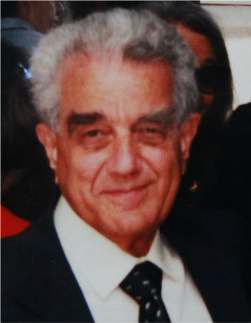
Il Gruppo Nazionale SWICo intende rendere omaggio alla memoria del prof. Franco Mariani, personalità scientifica di rilievo in ambito internazionale, pioniere e protagonista dello sviluppo della ricerca spaziale in Italia, con l’istituzione del Premio “Franco Mariani” per giovani laureati magistrali in discipline inerenti lo “Space Weather” (https://swico2024.it/premio-mariani/).
Il premio è rivolto a giovani laureati magistrali in discipline inerenti lo Space Weather.
La scadenza per l’invio delle domande di partecipazione al premio è il 30 Luglio 2024.
Convocazione dell’Assemblea per il rinnovo delle cariche sociali
In ottemperanza a quanto previsto dal Regolamento Elettorale della Space Weather Italian Community (SWICo), l’Assemblea per il rinnovo delle cariche sociali di Presidente e del Consiglio Direttivo per il triennio 2025-2028 si svolgeranno nel corso del Terzo Congresso SWICo che si terrà presso l’Agenzia Spaziale Italiana, Roma, nei giorni 27-29 Novembre 2024.
Si ricorda che Il Consiglio Direttivo è composto dal Presidente e da un numero di Consiglieri (variabile, ma non superiore a sette) eletti dall’Assemblea.
Possono partecipare alle operazioni di voto tutti i Soci effettivi, che costituiscono l’elettorato attivo
e passivo. La votazione avverrà esclusivamente in presenza. L’Assemblea è validamente costituita
qualunque sia il numero dei Soci presenti.
La normativa relativa alla presentazione delle candidature e allo svolgimento delle elezioni è
definita nel Regolamento Elettorale.
Il decreto di convocazione firmato dal presidente è visibile in calce e scaricabile dal modulo sottostante:
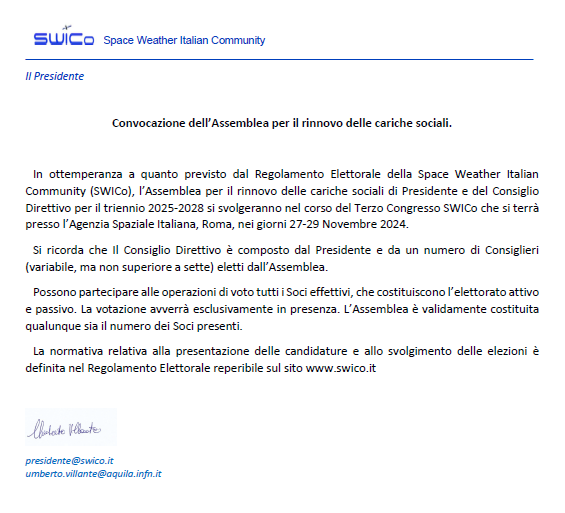
Terzo Congresso Nazionale SWICo
Il Terzo Congresso SWICo intende essere un momento di incontro e confronto dell’intera comunità italiana impegnata nelle discipline in questione. Il Congresso è pertanto aperto anche ai non appartenenti a SWICo. E’ inoltre particolarmente incoraggiata la partecipazione attiva di studenti, dottorandi e giovani ricercatori.
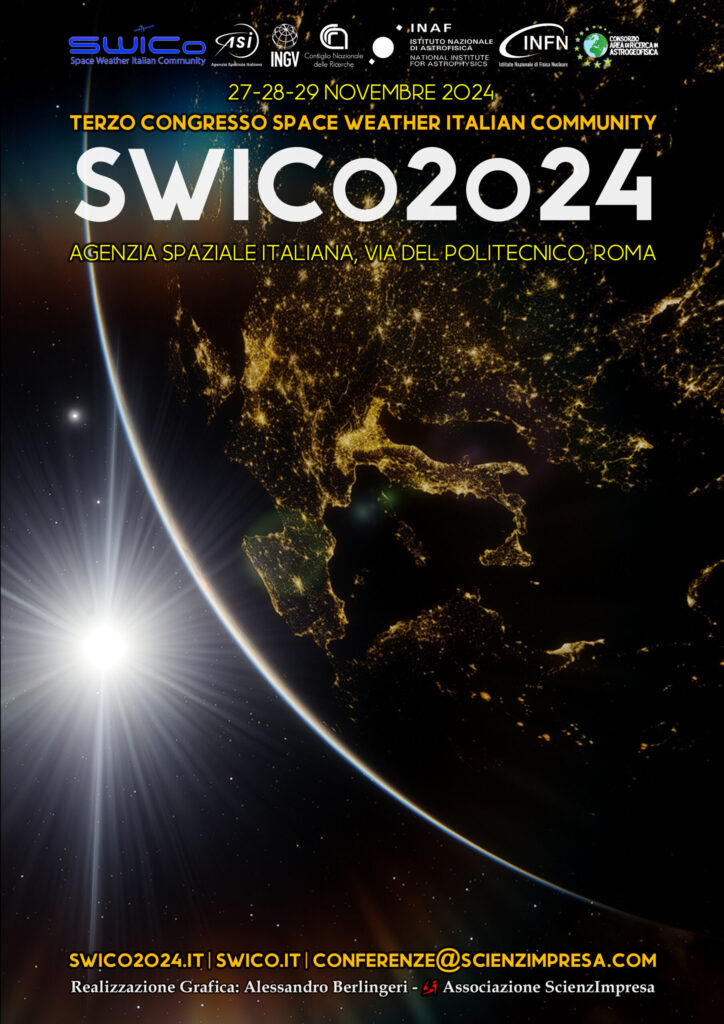
Al tal fine, il Consiglio Direttivo, compatibilmente con le risorse disponibili, intende favorire la partecipazione gratuita di personale in formazione e assegnare un premio ai migliori contributi (orali e/o poster) da parte dei giovani.
Il congresso si svolgerà presso la sede centrale dell’Agenzia Spaziale Italiana il 27-28-29 Novembre 2024.
Per la deadline per l’invio dei contributi ed ulteriori informazioni si rimanda al sito dedicato al congresso: https://swico2024.it/
Nell’ambito del Congresso verrà anche tenuta l’Assemblea Generale per il rinnovo degli Organi Statutari.
Il Congresso offrirà, inoltre, l’opportunità del conferimento del Premio “Franco Mariani” (giunto alla seconda edizione), istituito per onorare la memoria di una personalità scientifica di statura internazionale, promuovendo il coinvolgimento di giovani ricercatori nelle discipline inerenti lo Space Weather.
17th European Solar Physics Meeting – Turin, 9-13 September 2024

Dear colleagues,
this is the second announcement for the 17th European Solar Physics Meeting (ESPM-17) that will take place in Turin (Italy) in the period 9-13 September, 2024.
ESPMs are organized by the Board of the European Solar Physics Division (ESPD), a Division of the European Physical Society (EPS). This will be the first in-person ESPM after the stop due to the worldwide pandemic.
The scientific program of the next ESPM meeting will be organized around the following topics:
- Solar interior, sub-surface flows and long-term variability
- Fundamental mechanisms of solar plasmas: magnetic reconnection, waves, radiation and particle acceleration
- Energy and mass transfer throughout the solar atmosphere and structures within
- Multi-scale energy release, flares and coronal mass ejections
- Space weather and the solar-heliospheric connections
- Diagnostic tools and numerical methods in solar physics
The meeting will start on the morning of September 9, and will finish around noon on September 13. The afternoon of September 11 will be dedicated to social excursions, and the conference dinner will be held on September 12. A welcome reception will be offered on Sunday 8 late afternoon.
Online registration and abstract submission will open in early spring 2024. The ESPM-17 Local and Scientific Organizing Committees are currently working to secure funding that will hopefully provide limited travel and/or local support mainly to young researchers.
Further details related to registration fees, abstract submission, accommodation, financial assistance and relevant deadlines will be circulated in a third announcement and will also be available on the meeting’s website:
https://indico.ict.inaf.it/e/espm-17
We look forward to welcoming you in Turin,
the ESPM-17 LOC.
Concluso il Secondo Congresso Nazionale SWICo
Si è concluso presso la sede dell’Agenzia Spaziale Italiana il “Secondo Congresso Nazionale SWICo”. L’incontro si è svolto il 9, 10 e 11 febbraio 2022 (https://swico2021.web.roma2.infn.it/) ed è stato un momento di incontro e confronto dell’intera comunità elio-geofisica italiana impegnata nelle discipline relative allo Space Weather (dal Sole all’interno della Terra).
Durante il convegno si è tenuta l’Assemblea Nazionale SWICo per il rinnovo degli Organi Statutari ed è stato conferito il Premio “Franco Mariani” (https://swico2021.web.roma2.infn.it/premio-mariani), istituito per onorare la memoria di una personalità scientifica di statura internazionale e rivolto a giovani laureati magistrali in discipline inerenti lo “Space Weather”. Per ulteriore informazioni sul congresso SWICo raccomandiamo la lettura delle interviste uscite nei giorni scorsi:
Current state and perspectives of Space Weather science in Italy
Papers from SWICo members
Plainaki Christina, Antonucci Marco, Bemporad Alessandro, Berrilli Francesco, Bertucci Bruna, Castronuovo Marco, De Michelis Paola, Giardino Marco, Iuppa Roberto, Laurenza Monica, Marcucci Federica, Messerotti Mauro, Narici Livio, Negri Barbara, Nozzoli Francesco, Orsini Stefano, Romano Vincenzo, Cavallini Enrico, Polenta Gianluca, Ippolito Alessandro
This paper presents a brief state-of-the-art in Space Weather science in Italy and discuss some ideas on a long-term plan for the support of future scientific research in the related disciplines. Italian teams contributed in the advancing of our knowledge on the properties and evolution of the Space Weather phenomena with observational campaigns from space and from the ground. Numerous Space Weather forecasting and now-casting modeling efforts have resulted in a remarkable add-on to the overall progress in the field, at both national and international level. The Italian Space Agency participated several times in space missions related to Space Weather; indeed, the development of new instrumentation for future Heliophysics and Space Weather space missions will be very important for the Italian scientific and industrial communities.
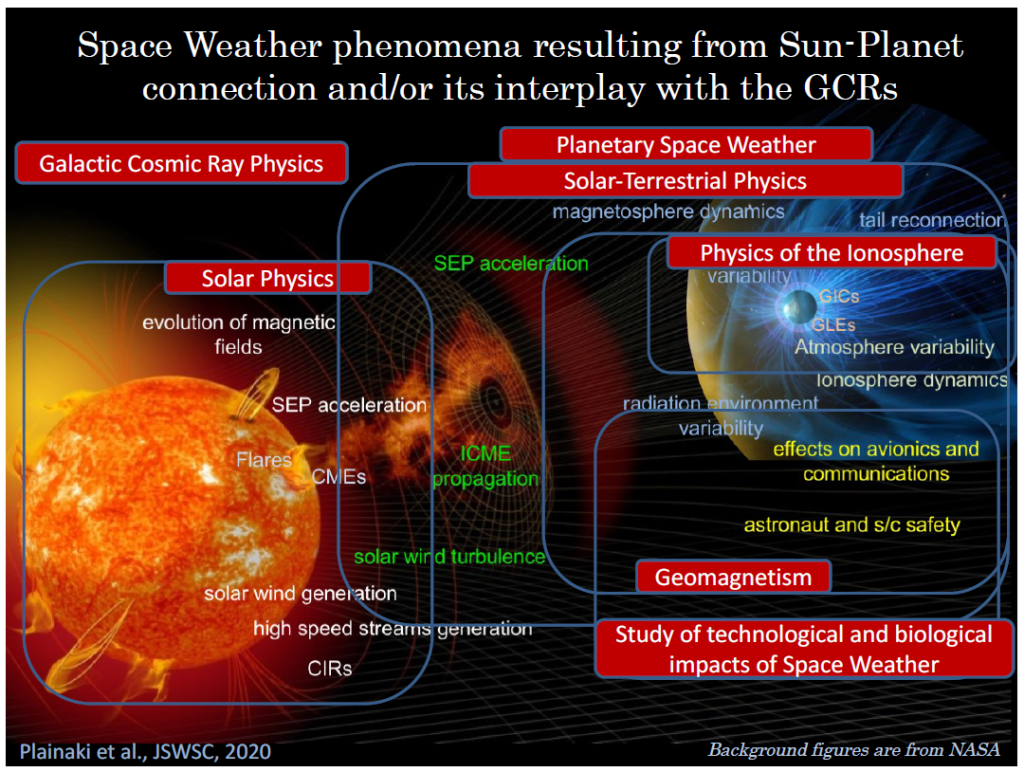
The Italian Space Agency aims to assess the possibility to develop a national scientific Space Weather data centre to encourage synergies between different science teams with interest in the field and to motivate innovation and new mission concept development. Alongside with the proposed recommendations, this paper also discusses how the Italian expertise could complement international efforts in a wider international Space Weather context.
Publication: Plainaki C., Antonucci M., Bemporad A., Berrilli F., Bertucci B., Castronuovo M., De Michelis P., et al., 2020, JSWSC, 10, 6. doi:10.1051/swsc/2020003. https://www.swsc-journal.org/articles/swsc/abs/2020/01/swsc190014/swsc190014.html
Can an impulsive variation of the solar wind plasma pressure trigger a plasma bubble? A case study based on CSES, Swarm and THEMIS data
Papers from SWICo members
M. Piersanti, M. Pezzopane, Z. Zhima, P. Diego, C. Xiong, R. Tozzi, A. Pignalberi, G. D’Angelo, R. Battiston, J. Huang, P. Picozza, Y. Rui, X. Shen, R. Sparvoli, P. Ubertini, Y. Yang, S. Zoffoli
During the August 25, 2018 geomagnetic storm, the new borne CSES-01 satellite and the Swarm A satellite detected a really large equatorial plasma bubble (EPB) in the post-midnight sector over western Africa. We investigated the features of this deep ionospheric plasma depletion using data from the Langmuir probes on-board CSES-01 and Swarm A satellites, and data from the high-precision magnetometer and the electric field detector instruments on-board CSES-01. Using also plasma and magnetic field data from THEMIS-E satellite we found that, during the passage of the magnetic cloud that drove the geomagnetic storm, an impulsive variation lasting about ten minutes characterized the solar wind (SW) pressure.
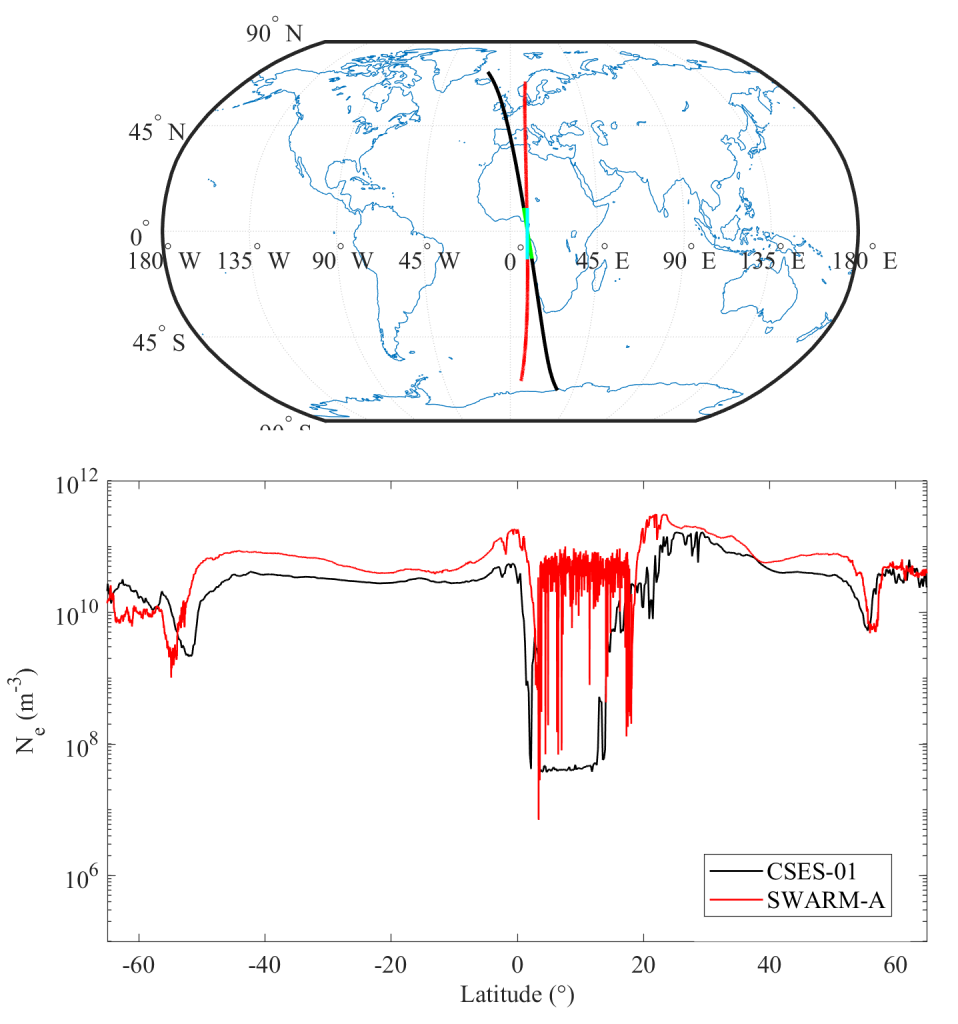
The analysis of the delay time, between the occurrence of such impulsive variation and the detection of the plasma bubble, suggests a possible link between the SW pressure impulsive variation as identified by THEMIS-E and the generation of the EPB as detected by CSES-01 and Swarm A. We put forward the hypothesis that the SW pressure impulsive variation might have triggered an eastward prompt penetrating electric field that propagated from high to equatorial latitudes, overlapping in the nightside region to the zonal westward electric field, causing either a reduction or an inversion, at the base of the EPB triggering.
Publication: M. Piersanti, M. Pezzopane, Z. Zhima et al., Can an impulsive variation of the solar wind plasma pressure trigger a plasma bubble? A case study based on CSES, Swarm and THEMIS data, Advances in Space Research 67, 35–45, 2021. https://doi.org/10.1016/j.asr.2020.07.046
The Great Aurora of 4 February 1872 observed by Angelo Secchi in Rome
Papers from SWICo members
Francesco Berrilli, Luca Giovannelli
On February 4, 1872, exactly 150 years ago, a great aurora was observed over a vast extent of the Earth. The aurora was also observed in Rome. In a pioneering work by Angelo Secchi, then director of the Observatory of the Roman College, there is the description of the multi-instrument observations carried out in Rome. An avant-garde work that describes what today we call an extreme event of Space Weather, an event with consequences on technological infrastructures on a planetary scale.
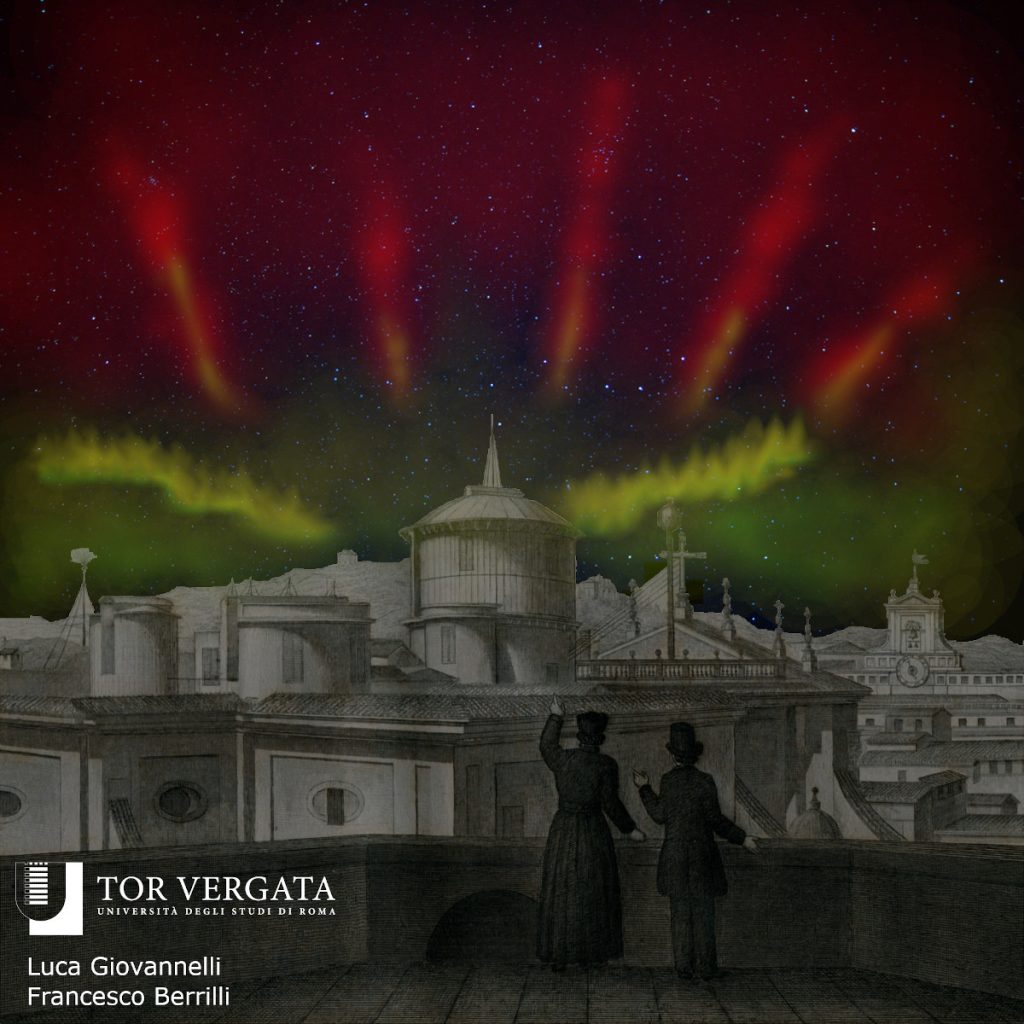
In a recent paper, we describe the main results of the observations and studies carried out by Angelo Secchi at the Observatory of the Roman College and described in his “Memoria sull’Aurora Elettrica del 4 Febbraio 1872” for the Notes of the Pontifical Academy of new Lincei.
Publication: Berrilli F., Giovannelli L., 2021, Journal of Space Weather and Space Climate, vol. 12. https://www.swsc-journal.org/articles/swsc/full_html/2022/01/swsc210083/swsc210083.html
Flare-forecasting Algorithms Based on High-gradient Polarity Inversion Lines in Active Regions
Papers from SWICo members
Domenico Cicogna, Francesco Berrilli, Daniele Calchetti, Dario Del Moro, Luca Giovannelli, Federico Benvenuto, Cristina Campi, Sabrina Guastavino, Michele Piana
Solar flares emanate from solar active regions hosting complex and strong bipolar magnetic fluxes. Estimating the probability of an active region to flare and defining reliable precursors of intense flares are extremely challenging tasks in the space weather field. In this work, we focus on two metrics as flare precursors, the unsigned flux R, tested on Michelson Doppler Imager/Solar and Heliospheric Observatory data, one of the most used parameters for flare-forecasting applications, and a novel topological parameter D, representing the complexity of a solar active region.
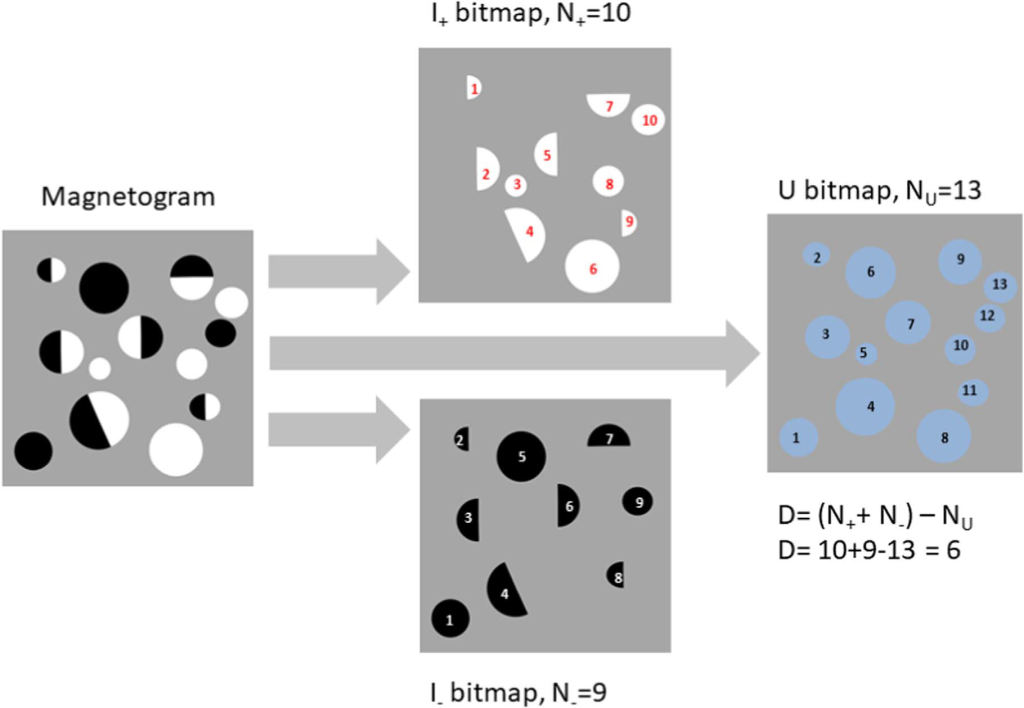
We use both a heuristic approach and a supervised machine-learning method to validate the effectiveness of these two descriptors to predict the occurrence of X- or M-class flares in a given solar active region during the following 24 hr period. Our feature ranking analysis shows that both parameters play a significant role in prediction performances. Moreover, the analysis demonstrates that the new topological parameter D is the only one, among 173 overall predictors, that is always present for all test subsets and is systematically ranked within the top 10 positions in all tests concerning the computation of the weights with which each predictor impacts the flare forecasting.
Publication: Cicogna D., Berrilli F., Calchetti D., Del Moro D., Giovannelli L., Benvenuto F., Campi C., et al., 2021, ApJ, 915, 38. doi:10.3847/1538-4357/abfafb. https://iopscience.iop.org/article/10.3847/1538-4357/abfafb
